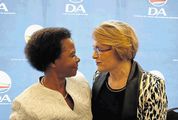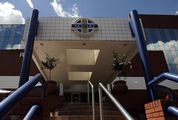Banks’ risky assets growing faster than their total holdings
by Moyagabo Maake,
2016-03-11 05:53:36.0
SA’s four major banks have a growing arsenal of risky assets that has reached a three-year high, and poses a regulatory nightmare once the domestic market aligns with global rules.
A PwC survey on Thursday showed growth in risk-weighted assets as a percentage of total assets at Standard Bank, Barclays Africa, FirstRand and Nedbank comprised 59.1% in the second half of last year.
This was higher than 58.4% in the second half of 2014, and just less than 55% in the first half of 2013.
The banks’ combined risk-weighted assets reached R2.8-trillion in the second half, 8.8% up on the first half, and 11.9% on the previous year.
Growth in risky assets outpaced that of total assets in both periods, growing 7.9% and 10.6%, respectively.
"The growth in risk-weighted assets can, in some part, be attributed to the technical treatment of credit risk under Basel 3," said Stefan Beyers, PwC banking and capital markets partner.
The Reserve Bank, in line with Basel 3, had also removed zero-rated risk weighting for credit valuation adjustments on certain over-the-counter derivatives that were not cleared through a central counterparty, which contributed to the growth in risky assets, Mr Beyers said.
Yet more regulation may catch up with domestic banks.
European regulators on Tuesday published new technical standards for buyers and sellers engaging in over-the-counter derivative trades, which will require them to set aside an estimated €200bn and €420bn in collateral by 2020, when the rules will be fully effective.
The rules are to be phased in from September.
Mr Beyers said over-the-counter derivatives markets globally continued to be the subject of the Basel committee’s regulatory reform agenda. "It is difficult to forecast how these rules, which for the moment are European Union-specific and still in draft form, will play out in other jurisdictions."
In SA, the industry is holding discussions about introducing a central clearing house for the derivatives market.

Picture: ISTOCK
SA’s four major banks have a growing arsenal of risky assets that has reached a three-year high, and poses a regulatory nightmare once the domestic market aligns with global rules.
A PwC survey on Thursday showed growth in risk-weighted assets as a percentage of total assets at Standard Bank, Barclays Africa, FirstRand and Nedbank comprised 59.1% in the second half of last year.
This was higher than 58.4% in the second half of 2014, and just less than 55% in the first half of 2013.
The banks’ combined risk-weighted assets reached R2.8-trillion in the second half, 8.8% up on the first half, and 11.9% on the previous year.
Growth in risky assets outpaced that of total assets in both periods, growing 7.9% and 10.6%, respectively.
"The growth in risk-weighted assets can, in some part, be attributed to the technical treatment of credit risk under Basel 3," said Stefan Beyers, PwC banking and capital markets partner.
The Reserve Bank, in line with Basel 3, had also removed zero-rated risk weighting for credit valuation adjustments on certain over-the-counter derivatives that were not cleared through a central counterparty, which contributed to the growth in risky assets, Mr Beyers said.
Yet more regulation may catch up with domestic banks.
European regulators on Tuesday published new technical standards for buyers and sellers engaging in over-the-counter derivative trades, which will require them to set aside an estimated €200bn and €420bn in collateral by 2020, when the rules will be fully effective.
The rules are to be phased in from September.
Mr Beyers said over-the-counter derivatives markets globally continued to be the subject of the Basel committee’s regulatory reform agenda. "It is difficult to forecast how these rules, which for the moment are European Union-specific and still in draft form, will play out in other jurisdictions."
In SA, the industry is holding discussions about introducing a central clearing house for the derivatives market.





















Change: 1.41%
Change: 1.74%
Change: 1.55%
Change: 1.65%
Change: 1.42%
Data supplied by Profile Data
Change: 0.57%
Change: 0.09%
Change: 1.41%
Change: 0.00%
Change: -0.13%
Data supplied by Profile Data
Change: 0.06%
Change: -0.09%
Change: 0.13%
Change: 0.22%
Change: -0.12%
Data supplied by Profile Data
Change: -0.58%
Change: -0.31%
Change: -0.39%
Change: -0.35%
Change: -1.08%
Data supplied by Profile Data